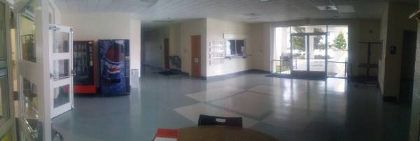Jacinto Courthouse
Jacinto, MS, 38865 US / MS
Jacinto Courthouse
Location Description
Built in 1854, Jacinto Courthouse once served one of the largest counties in the State of Mississippi, Tishomingo. Tishomingo County, named for the leading chief of the Chickasaw tribe, comprised more that 923,000 acres until 1870 when it was divided into the present-day counties of Alcorn, Prentiss and Tishomingo. The courthouse was used as a school until 1908 and as a Methodist Church until 1960. Slated for demolition, the building was purchased in 1964 and restoration began. Jacinto Courthouse is one of the South's most impressive examples of federal-style architecture. The hipped roof is topped with an octagonal cupola. The foundation is constructed of hand-cut stone. Each brick used in the building is hand-made and each board hand-hewn. Each year Jacinto Courthouse becomes the site of an old fashioned 4th of July Festival Jacinto Courthouse is a rare relic from the earliest days of North Mississippi. The town of Jacinto was founded in 1836 as the capital of old Tishomingo County, one of the original ten counties formed in the 1830s from the Chickasaw Cession. Jacinto was at the geographic center of the large county, which spread over 1,000 square miles, covering much of northeast Mississippi. The town, which was named after Sam Houston’s decisive victory over the Mexican army at the Battle of San Jacinto, began to grow quickly, and soon had taverns, shops and other amenities. A small log courthouse was built when the town was founded for local government, but the growing town needed a much larger building. In 1854, the present courthouse was built in the Federal style. The building was constructed by architect J. J. Blythe for just under $7,000. The bricks and timber were hand made and hand hewn. The Courthouse witnessed the continuing growth of the town as the main economic center of northeast Mississippi. By the outbreak of the Civil War, the town had reached a population of 6,600, and the Courthouse was surrounded by fifty blocks of houses and shops. The town was spared any major damage or destruction during the Civil War, and looked to continue its economic dominance into the future, except for several catastrophic decisions which utterly destroyed the town. In 1870, old Tishomingo County was subdivided into three smaller counties: Alcorn, Prentiss and Tishomingo counties. Jacinto was no longer located at the center of the county, and the Tishomingo capital was moved to Iuka. Jacinto was now a much less important town located in the new Alcorn county. The loss of the county seat seemed to spook the leaders of Jacinto, and they compounded the issue with new mistakes. The town leaders refused to allow the new railroad to go through Jacinto, which cut the town’s economy off at the knees. Instead, the railroad went through the nearby towns of Corinth and Iuka, and many residents of Jacinto followed the railroad and left town. Later, the town refused to prevent local farmers from cutting down telegraph poles coming into town, which completely isolated the former boom town from the rest of the world. The population of Jacinto quickly dwindled from 6,000 residents to just a few hundred. The stores, inns and newspapers died out, and the lawyers and doctors left town. The only thing that remained in Jacinto to suggest the town’s former glory was the beautiful Federal Courthouse that now overlooked an empty town square. After 1870, the Courthouse was used as a schoolhouse from 1870 until 1908. From 1908 to 1960 it was used as the Methodist church. When this congregation died out, the building was nearly lost to a wrecking company, but several concerned citizens saved the Courthouse from destruction. In 1973, the Courthouse was restored for $88,000. Today, the Courthouse is occasionally open to visitors, especially during the large July 4th political rallies that still take place here every year. The Jacinto Courthouse remains one of the best examples of Federal architecture in the South
Location Category
- GOVERNMENT - [general]
- GOVERNMENT - Courthouses / Courtrooms
Architecture Style
- 1800s / Civil War
- Federal
Disclaimer: All data, information, and maps are provided "as is" without warranty or any representation of accuracy, timeliness or completeness. The content of the information is solely dependent on the location owner/contact and no warranties, express or implied, as to the use of the information are obtained here. The requestor acknowledges and accepts all limitations, including the fact that the data, information, and maps are dynamic and in a constant state of maintenance, correction and update.

























































































































































































































